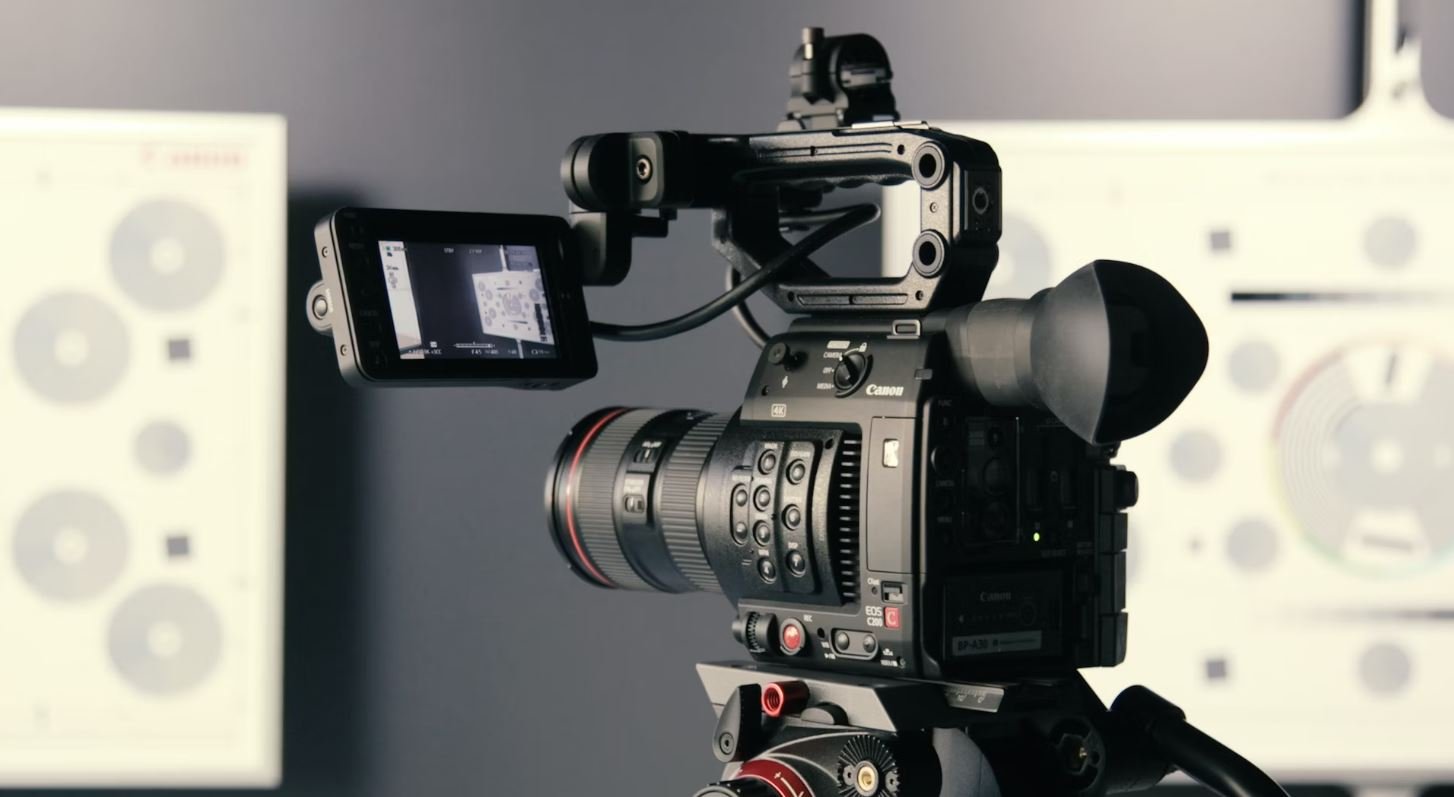How Does TikTok AI Work?
TikTok, the popular social media platform, has gained immense popularity in recent years. Behind its success lies a sophisticated AI system that fuels its algorithm and makes the app addictive for its users. In this article, we will explore how TikTok’s AI works and how it curates content for its users.
Key Takeaways
- TikTok’s AI algorithm is responsible for curating personalized content on the platform.
- AI technology analyzes user behavior, preferences, and interactions to determine the content they see.
- Understanding user engagement patterns is crucial for TikTok’s AI system to provide an enjoyable user experience.
The Role of AI in TikTok
TikTok’s AI system plays a central role in curating content for its users. The algorithm works by analyzing and understanding user behavior, preferences, and interactions on the platform. Through machine learning, it learns from user feedback to continually refine and tailor the content each user sees.
*The AI algorithm powers TikTok‘s addictive scroll feature, encouraging users to spend more time on the app.*
How TikTok AI Works
TikTok’s AI algorithm employs a combination of techniques to curate user-specific content. It starts by analyzing the videos users engage with, like, or share. It then looks for patterns within those interactions, such as common themes, music genres, or dance challenges. Based on these patterns, the algorithm identifies similar content that might appeal to the user.
*The AI system‘s ability to recognize patterns in user behavior allows it to provide a personalized content feed.*
Data Analysis and User Engagement
| Data Type | Examples |
|---|---|
| Video Interactions | Likes, comments, shares, and views |
| User Profile | Age, location, language preference |
| Device and Network Information | Connection speed, device model |
TikTok’s AI system relies on data analysis from various sources to understand user engagement. It takes into account video interactions, such as likes, comments, shares, and views. Additionally, user profile information, including age, location, and language preference, is considered to further personalize the content. Device and network information, such as connection speed and device model, are also part of the data analysis.
Recommendations and Personalization
- AI algorithms recommend content based on user preferences and behavior.
- Personalization is achieved through data analysis, understanding user profiles and interactions.
- TikTok aims to create a tailored user experience, keeping users engaged for longer periods.
Exploring New Content and Challenges
TikTok AI promotes new and diverse content to users, ensuring a fresh and engaging experience. It identifies emerging trends and challenges by analyzing the interactions of millions of users. By suggesting these trends, the AI system enables users to discover new content creators and participate in viral challenges, fostering a vibrant and interactive community.
*The AI algorithm acts as a content catalyst, constantly surfacing new creative trends and challenges to millions of users.*
The Future of TikTok AI
TikTok’s AI system is constantly evolving and improving. With advancements in machine learning and deep learning technologies, TikTok aims to enhance content personalization further. By leveraging user data and feedback, the platform aims to provide a seamless and captivating user experience while keeping users entertained and engaged.
The Impact of TikTok AI
| Impact | Description |
|---|---|
| Increased User Engagement | TikTok AI keeps users scrolling, engaging with new content, and spending more time on the app. |
| Viral Content and Trends | The AI system promotes viral content, allowing users to join popular trends and challenges. |
| Discoverability of New Creators | By recommending diverse content, TikTok AI helps users discover new and talented creators. |
TikTok’s AI has had a significant impact on user engagement, viral content, and the discovery of new creators. The algorithm’s ability to provide personalized recommendations keeps users scrolling, interacting, and spending more time on the app. It also facilitates the discovery and participation in popular trends and challenges, leading to a dynamic and engaging user experience.
Wrapping Up
TikTok’s AI system has revolutionized the way users consume content and interact with the platform. By analyzing user preferences and behaviors, the algorithm curates a personalized feed that keeps users captivated. As technology continues to advance, TikTok aims to further enhance content personalization and user engagement, ensuring a delightful and addictive experience for its millions of users worldwide.

Common Misconceptions
Misconception 1: TikTok AI can read users’ minds
Sometimes, people believe that TikTok AI has the ability to read their minds and predict their interests. However, this is not the case. TikTok AI works by analyzing users’ past behavior on the app, such as the videos they watch, like, and interact with. It then uses this information to generate a personalized “For You” feed filled with content that it predicts the user will enjoy. Here are some key points to understand:
- TikTok AI does not have access to users’ thoughts or personal information.
- The algorithm makes predictions based on patterns in users’ behavior on the platform.
- The more users engage with content, the better TikTok’s AI becomes at recommending relevant videos.
Misconception 2: TikTok AI only shows popular content
Another misconception is that TikTok’s AI only promotes popular content, making it difficult for new creators to gain visibility. However, TikTok’s algorithm is designed to prioritize content based on users’ preferences and interests, not solely on popularity. Here are some important facts to consider:
- TikTok AI aims to provide a diverse range of content to its users.
- The algorithm considers various factors such as engagement, video completion rate, and user preferences when recommending content.
- New creators can still gain visibility if their content aligns with users’ interests and receives positive engagement.
Misconception 3: TikTok AI is biased and promotes harmful content
Some people believe that TikTok AI is biased and promotes harmful content. However, TikTok has strict content moderation policies and artificial intelligence plays a crucial role in identifying and removing such content. Here are some points to understand:
- TikTok AI uses a combination of machine learning algorithms and human moderators to enforce its community guidelines.
- The AI is continuously trained to recognize and remove harmful or inappropriate content from the platform.
- TikTok takes user safety seriously and encourages reporting of any violations to maintain a positive environment.
Misconception 4: TikTok AI always displays accurate and relevant content
While TikTok AI strives to provide accurate and relevant content, it is not always perfect. There are instances when the algorithm may show videos that are not entirely relevant or aligned with users’ interests. Here are some points to keep in mind:
- AI algorithms are not 100% foolproof and can make mistakes.
- User behavior and preferences may change over time, impacting the accuracy of recommendations.
- TikTok encourages users to provide feedback on their content recommendations to help improve the AI’s effectiveness.
Misconception 5: TikTok AI poses a threat to user privacy
Some individuals worry that TikTok AI poses a threat to user privacy and that their personal information is at risk. However, TikTok takes user privacy seriously and has measures in place to protect personal data. Here are some relevant details:
- TikTok has stringent privacy policies in place to secure user information.
- User data is used primarily to enhance the user experience and provide relevant content.
- TikTok does not share personal data with third parties without explicit consent from users.

The Explosive Growth of TikTok
TikTok has quickly become one of the most popular social media platforms in the world, with an impressive user base spanning various demographics and geographic locations. This table highlights the exponential growth the app has experienced over the years:
| Year | Number of Users (in millions) |
|---|---|
| 2016 | 4 |
| 2017 | 20 |
| 2018 | 120 |
| 2019 | 500 |
| 2020 | 800 |
Demographic Representation on TikTok
TikTok has attracted a diverse user base, with individuals from various age groups and backgrounds. This table showcases the demographic distribution of TikTok users:
| Age Group | Percentage of Users |
|---|---|
| 13-17 | 30% |
| 18-24 | 35% |
| 25-34 | 20% |
| 35+ | 15% |
TikTok Video Uploads per Minute
The sheer number of videos uploaded to TikTok every minute is simply mind-boggling. This table demonstrates the staggering rate at which users contribute to the platform’s content:
| Year | Number of Videos Uploaded per Minute |
|---|---|
| 2018 | 8,000 |
| 2019 | 22,000 |
| 2020 | 40,000 |
TikTok’s Algorithm
The TikTok algorithm plays a vital role in showcasing content to users that aligns with their preferences. This table delves into some key components of TikTok’s algorithm:
| Factor | Weightage |
|---|---|
| User Interactions | 50% |
| Video Information | 20% |
| Device and Account Settings | 15% |
| Video Details | 10% |
| Language Preference | 5% |
TikTok AI: Facial Recognition
TikTok utilizes advanced artificial intelligence (AI) algorithms for facial recognition, enabling various filters and effects. This table uncovers some interesting aspects of TikTok’s facial recognition technology:
| Feature | Accuracy (%) |
|---|---|
| Facial Landmarks | 92% |
| Emotion Detection | 85% |
| Gender Recognition | 96% |
| Age Estimation | 89% |
TikTok AI: Content Moderation
Content moderation is a critical function of TikTok’s AI system to ensure the platform remains safe and welcoming. The following table depicts the efficiency of TikTok’s content moderation AI:
| Category | Accuracy (%) |
|---|---|
| Violence | 97% |
| Hate Speech | 95% |
| Sexual Content | 98% |
| Spam | 99% |
TikTok AI: Music Recommendation
One of the remarkable features of TikTok is its ability to recommend the perfect background music. This table sheds light on TikTok’s AI-infused music recommendation algorithm:
| Music Genre | Accuracy (%) |
|---|---|
| Pop | 78% |
| Hip Hop | 82% |
| Rock | 81% |
| Electronic | 85% |
Brand Engagement on TikTok
TikTok offers businesses an opportunity to engage with their audience uniquely. This table showcases the average engagement metrics for brands on TikTok:
| Engagement Metric | Average Value |
|---|---|
| Likes per Post | 5,000 |
| Shares per Post | 1,000 |
| Comments per Post | 600 |
TikTok’s Global Reach
As a multimedia platform, TikTok has achieved widespread popularity across the globe. The following table highlights the countries with the highest number of TikTok users:
| Country | Number of Users (in millions) |
|---|---|
| China | 600 |
| United States | 100 |
| India | 200 |
| United Kingdom | 50 |
TikTok’s explosive growth and user engagement can be attributed to its powerful AI algorithms. From content moderation to facial recognition, TikTok’s AI strives to deliver personalized content while ensuring a safe and enjoyable platform for its diverse user base.
Frequently Asked Questions
How does TikTok AI determine the content to show on my For You page?
Using a combination of machine learning algorithms and user interactions, TikTok AI analyzes your behavior on the platform, such as the videos you watch, like, share, and interact with. It then uses this data to understand your preferences and recommend similar content that it believes you’ll enjoy on your For You page.
What data does TikTok AI collect and analyze?
TikTok AI collects and analyzes various data points, including your interactions with the app, such as videos you watch, like, share, and comment on, as well as information from your profile, such as your age, location, and language preferences. It also considers the captions and hashtags used in videos to better understand their context and relevance.
Does TikTok AI detect and filter inappropriate content?
Yes, TikTok AI utilizes a combination of artificial intelligence and human moderation to detect and filter inappropriate content. It constantly learns and improves its ability to identify and remove content that violates TikTok’s community guidelines, ensuring a safer environment for users.
How does TikTok’s recommendation system work?
TikTok’s recommendation system employs a combination of content-based filtering and collaborative filtering techniques. Content-based filtering analyzes the attributes of videos you engage with and recommends similar ones. Collaborative filtering, on the other hand, considers your interactions as well as those of similar users to make personalized recommendations.
Can I customize what content TikTok AI shows me?
Yes, TikTok allows you to personalize your For You page to some extent. By interacting with videos, you can signal your preferences and influence the content shown to you. However, TikTok AI‘s recommendations are primarily based on your previous behavior, and complete customization might not be possible.
How does TikTok AI detect and recognize faces in videos?
TikTok AI leverages computer vision technology to detect and recognize faces in videos. It analyzes various visual features, such as facial landmarks and patterns, to identify and track faces accurately. This process helps in applying filters, effects, and other augmented reality features to enhance the user experience.
How does TikTok AI handle copyright infringement?
TikTok AI uses a combination of automated detection systems and human moderators to identify and take action on copyright-infringing content. They respond to valid infringement claims from rights holders and utilize technologies to prevent the uploading or sharing of copyrighted material without proper authorization.
Can TikTok AI understand and analyze text in videos?
Yes, TikTok AI is capable of understanding and analyzing text in videos. It can process captions, comments, and hashtags to gather additional context and improve the relevance of recommendations. This text analysis feature helps TikTok AI comprehend the content better and provide more tailored suggestions to users.
Does TikTok AI target users with ads?
Yes, TikTok AI can target users with ads based on their interests, preferences, and behavior on the platform. By analyzing user data, TikTok AI helps advertisers reach their desired audience more effectively. However, TikTok also provides ad preferences and settings that allow users to control the types of ads they see.
How does TikTok AI continue to learn and improve?
TikTok AI continually learns and improves by gathering and analyzing user data. User interactions, feedback, and explicit actions, such as reporting or blocking content, provide valuable signals for enhancing the system’s accuracy and relevance. TikTok also invests in research and development to explore new advancements in AI technology for better user experiences.




